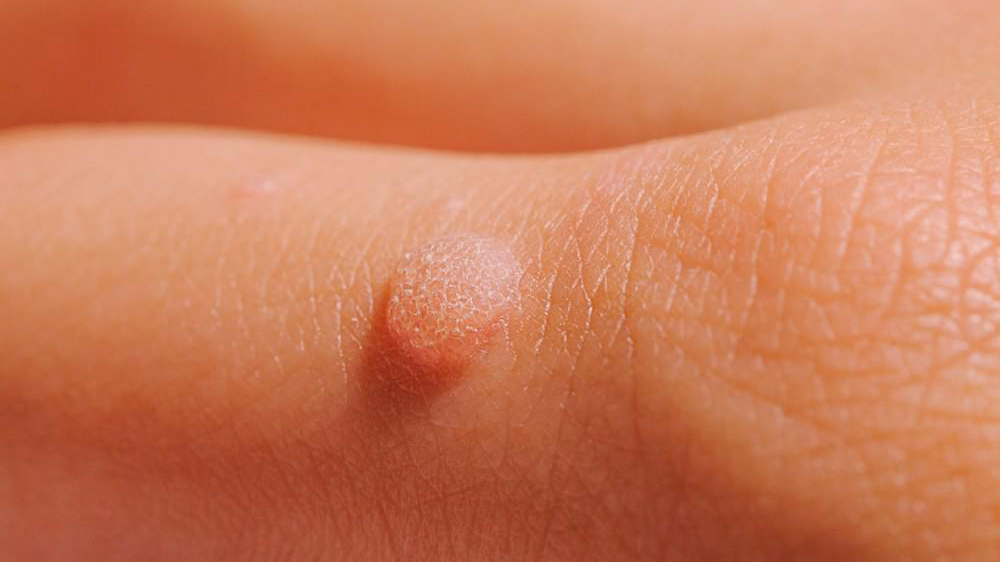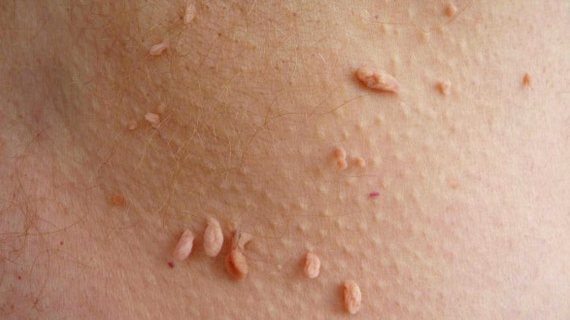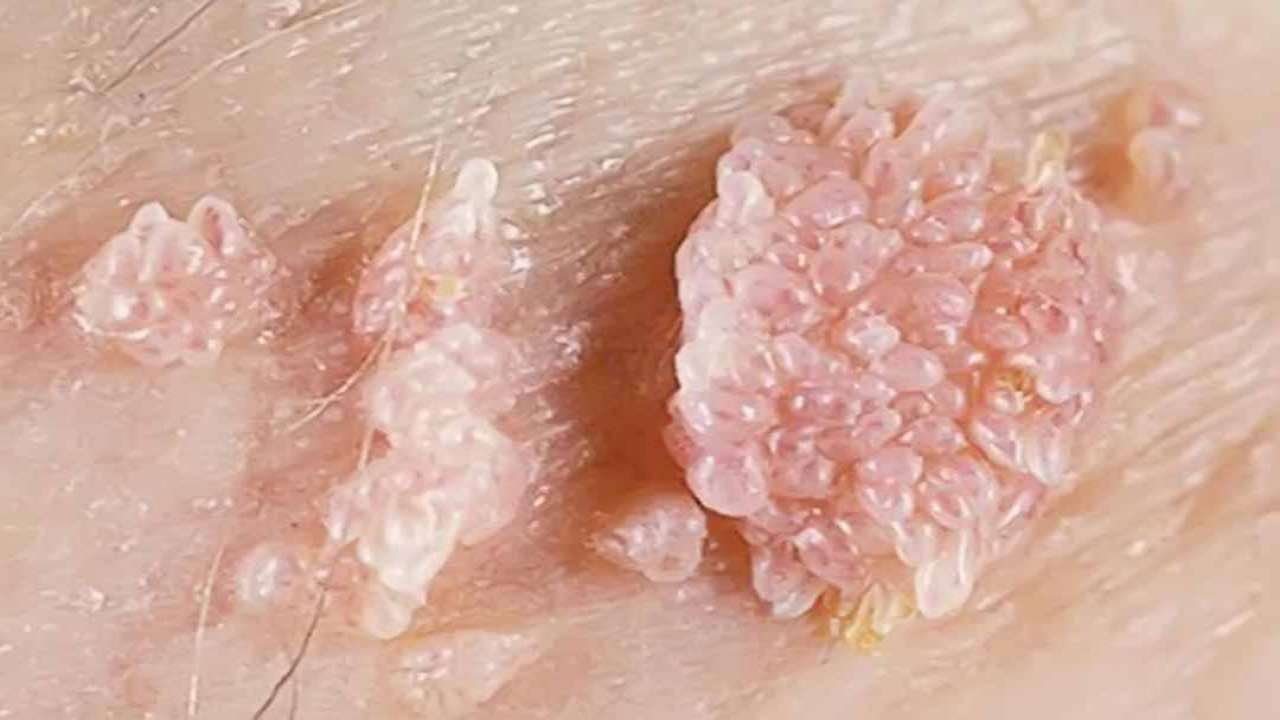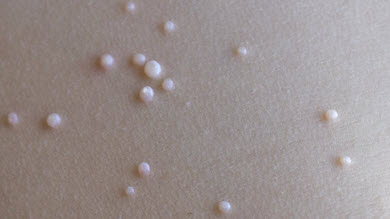Occurrence, Types, Treatment, and Prevention of Warts

Dr. Borbély Eszter
Occurrence and Types
Common warts, also known as verruca vulgaris in Latin, are an infectious skin disease caused by the human papillomavirus (HPV). It is caused by subtypes 1, 2, 4, and 7 of the HPV virus (there are a total of 150 known subtypes). It can affect both the skin and the mucous membranes. The virus is transmitted to the skin through environmental contact and enters the epithelial cells through small injuries.

Common wart (verruca vulgaris)
Condyloma infection, commonly known as genital warts or venereal warts, is also relatively common. It is caused by the human papillomavirus (HPV), specifically subtypes 6 or 11. Condyloma appears in the genital region and is classified as a sexually transmitted infection (STI); it is highly contagious.
Molluscum contagiosum, also known as water warts or swimmer's warts in colloquial terms, is another viral disease caused by the molluscum contagiosum virus, which belongs to the poxvirus family. It is commonly observed on the skin of children with atopic dermatitis. This virus can also affect adults, but in adults, it is primarily transmitted sexually and appears in the genital region. Therefore, in adults, it is classified as a sexually transmitted infection (STI).
Fibroma pendulum, commonly known as skin tags or acrochordons, is a thin, skin-colored or light brown skin growth that hangs on a slender stalk and is typically found on the face, neck, and armpits. Contrary to popular belief, fibroma pendulum is not a wart, and its viral origin cannot be confirmed. It is a benign soft tissue tumor, non-infectious in nature, and its removal is purely for cosmetic reasons.

Skin tags (fibroma pendulum)
Warts can occur at any age, but they are rare in infants and young children and become more common during school-age years.
Skin injuries contribute to the establishment of viral infections. Warts can accumulate due to nail biting or injury. Increased sweating, flat feet, and foot deformities contribute to the development of plantar warts.
Warts mainly appear on the soles of the feet, the dorsal surface of the hands, and occasionally on the face, the knees of children, and in certain cases in the genital region of adults. However, they can appear on any part of the body.
Recently, there has been an increase in the occurrence of plantar warts. This may be due to the shared use of showers in swimming pools and gym facilities.
Symptoms
Common warts (verruca vulgaris) are round or dome-shaped growths with a pale yellow
or brownish color and a rough surface. They have an uneven texture and do not itch
or cause inflammation unless they crack. They only cause pain when they become painful and cracked.
The most common appearance is as small, punctate, segmented, painful, and firm nodules
with a diameter of 2-5 mm on the fingers or the back of the hand.
The incubation period of the infection is long, usually 1-8 months.
Common warts often go unnoticed by the patient for a long time, especially if
they appear on the fingers, as they do not cause pain (although a small wart on the
sole of the foot can cause significant pain while walking). Over time, the nodules
grow to a size of 2-5 mm, become firm to the touch, and their surface becomes punctate
and segmented. Occasionally, warts can also develop at the edge and bed of the nails,
which can cause nail deformities and are difficult to treat without damaging the nail.
Condyloma, which appears on or around the genitals and develops into cauliflower-like growths ranging in size from a couple of millimeters to several centimeters, starts as a small red or skin-colored nodule. New nodules continue to develop and quickly merge to form cauliflower-like growths. They typically occur in warm, moist areas and in areas where skin touches, such as around the urethral opening or the anal area. Bacteria can also find an ideal environment within the fissured surface of the cauliflower-like growths. If bacteria multiply, a foul-smelling purulent discharge may be present on the surface. Some subtypes of condyloma can cause malignant changes in epithelial cells, which can lead to squamous cell carcinoma. In women, infection of the cervical mucosa increases the risk of developing cervical cancer.

Condyloma (condyloma acuminatum)
Molluscum contagiosum, also known as swimmer's wart, appears on the affected skin (trunk, limbs) as scattered or grouped, numerous small papules with a diameter of 2-10 mm. These papules have a central depression, smooth and shiny surface, and are filled with a white, cheesy mass. The virus provokes eczematous inflammation (eczema molluscatum) on the surrounding skin surface. This viral infection often underlies the presence of scattered, smaller eczematous patches.

Swimmer's wart (molluscum contagiosum)
Treatment
Due to their highly infectious nature, warts should always be treated. While it is possible for smaller warts to heal on their own without leaving scars due to the body's immune reaction, the relationship is not always clear-cut. The development of warts is partially associated with a weakened immune system, as they tend to appear more frequently after illnesses. However, the presence of warts does not necessarily indicate an immune disorder. Strengthening the immune system is not a reliable therapy, and since warts are highly contagious, it is not advisable to delay treatment and wait for the body to heal them naturally. Delaying treatment can lead to the spread of the disease to other areas of the skin and to other individuals in the patient's environment.
Treatment options for warts include:
- Topical application (using salicylic acid or lactic acid-based solutions, not suitable for facial warts; treatment may be required for 2-3 months; alternatively, celandine may be attempted)
- Cryotherapy (freezing with liquid nitrogen; quick and effective, the treated area typically heals within a few days; 2-3 treatments may be necessary)
- Removal using a Volkmann spoon or scraping
- Laser treatment for removal
- Removal using radiofrequency devices
When considering the various treatment options, it is important to find one that best suits the patient and the location of the warts.
Prevention and Avoidance
While it is not possible to completely prevent the appearance of warts, with some attention and care, the risk of developing them can be reduced. The most important preventive measure is regular hand washing, as this is the foundation for preventing any infectious disease. Since pathogens cause infection through the skin, it is crucial to take care of the skin's integrity. When discussing immune strengthening and disease prevention, many people fail to realize that the skin is the first line of defense through which pathogens can enter the body. To maintain skin health, it is important to regularly moisturize, as dry, cracked, or damaged skin provides easier entry for viruses. Whenever possible, try to prevent minor cuts and injuries, and if they do occur, treat them properly. It is important to stop nail-biting, as it can cause minor injuries on the hands. If prone to warts, it is advisable to always use your own towel and wear slippers in the shower in the gym or hotel .
Vaccination
Vaccination against human papillomavirus (HPV) can provide protection against HPV types 6 and 11, which cause warts, as well as types 16, 18, 31, 33, 45, 52, and 58, which cause cancer. The vaccine, known as "Gardasil 9," is available and accessible to everyone. It is financed by the government and provided free of charge to girls and boys in the 7th grade in Hungary. The treatment of both warts and HPV-related cancers can be lengthy, unpleasant, and often ineffective. Therefore, vaccination is highly recommended for prevention.
Useful Tips
- Regular hand washing is crucial and serves as the foundation for preventing any infectious disease.
- The skin is the first line of defense, so take care of its integrity. Regular moisturization is important, as dry, cracked, or damaged skin provides easier entry for viruses.
- If prone to warts, it is advisable to always use your own towel and wear slippers in the shower in the gym or hotel.
- Due to their significant infectious nature, warts should always be treated.
- Administer the HPV vaccine to yourself or your child - it can save you or your child from a lot of inconvenience.



